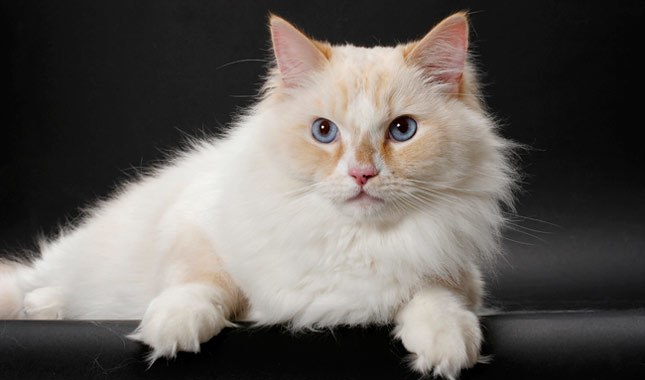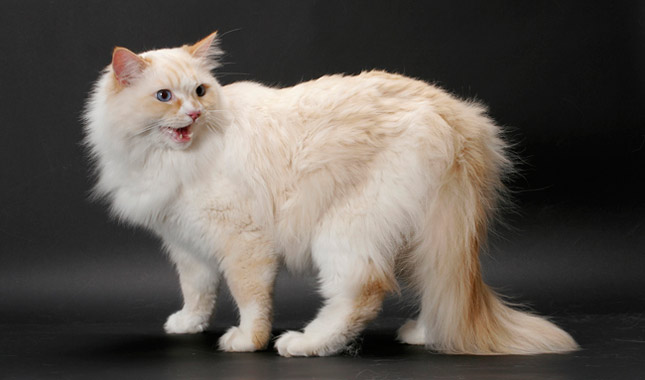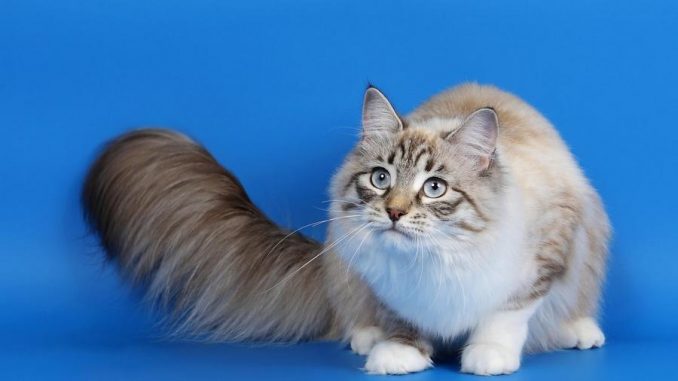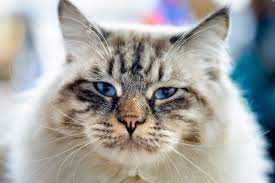#pets_tuttorial #jane_brody #pet_blog #pet_training #pet_products_reviews #best_dog_products #best_cat_products
When Leonardo da Vinci said, Even the Smallest Feline is Masterpiece, he probably was not talking about the Singapura cat breed, but the cat sure is a masterpiece. The Singapura is the smallest cat among all the cat breeds in the world. Weighing between four and eight pounds, this small feline may be a little creature, but it is a powerhouse with a big personality.
If you think of adopting this beautiful small pet, read on to find out everything you can about it.
Appearance
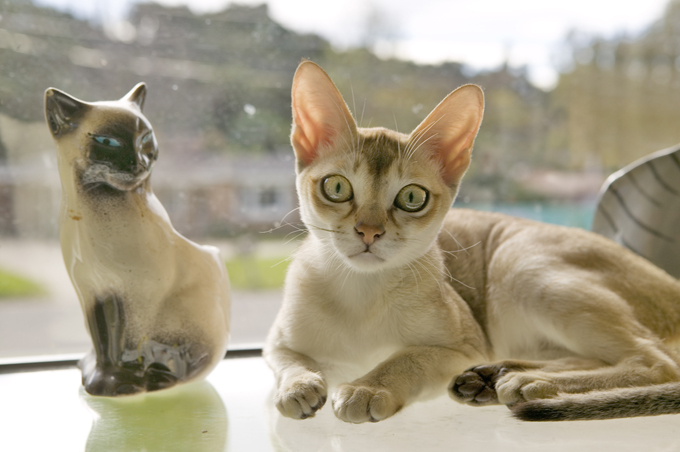
The first thing that strikes you about the Singapura is the unique look. It has a medium-sized body but with well-formed muscles. Besides the diminutive size of the ca that quickly catches everyone’s attention, the cat also has small saucer-sized eyes with oversized ears. The eyes have a black outline, and the body comes with a unique coloring that makes it stand out.
Unlike many other cat breeds with multiple colors and coat patterns, the Singapura comes in one color. It has a sepia-toned coat with light bands separating two dark ticking bands and a dark tip on the tail. According to the cat fanciers association, the muzzle, stomach, chin, and chest are the unbleached muslin color.
History
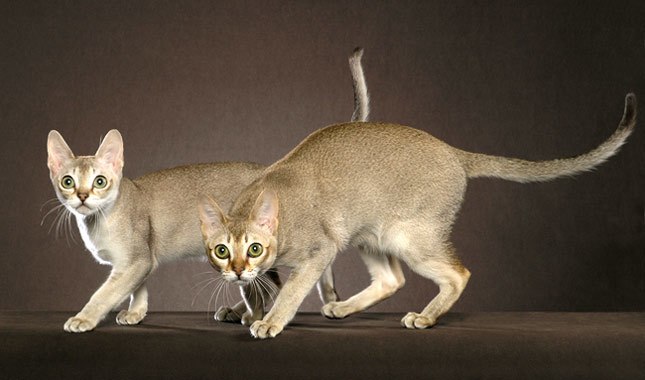
The Singapura breed history is vague and somewhat controversial, but one thing is clear: the breed came from Singapore’s streets. An American couple Hal and Tommy Meadows found three cats-one male and two females on the streets of an island in Singapore and brought the cats with them to America in 1970.
Another version of the Singapura origin says that Barbara Gilbertson found a female brown-ticked cat in SPCA Singapore. She brought it to America in 1980 because of her interest in the breed. In 1979, CAT recognized the Singapura while the fanciers association accepted it in 1981 with full recognition coming in 1988.
The American Cat Fanciers Associating also recognized the breed, and in 1991, the Singapore government honored the breed by naming it as one of its living national treasures. The other part of the breed’s controversy says that the cat is actually a crossbreed between the Abyssinian and Burmese breeds. Its first breeding place was the United States by the Meadows before someone else took it to Singapore.
Maybe the controversy surrounding the breed led the Cat Fanciers Association to classify the Singapura as a natural breed.
Read next: Ragamuffin Cat Breed
Personality and Temperament
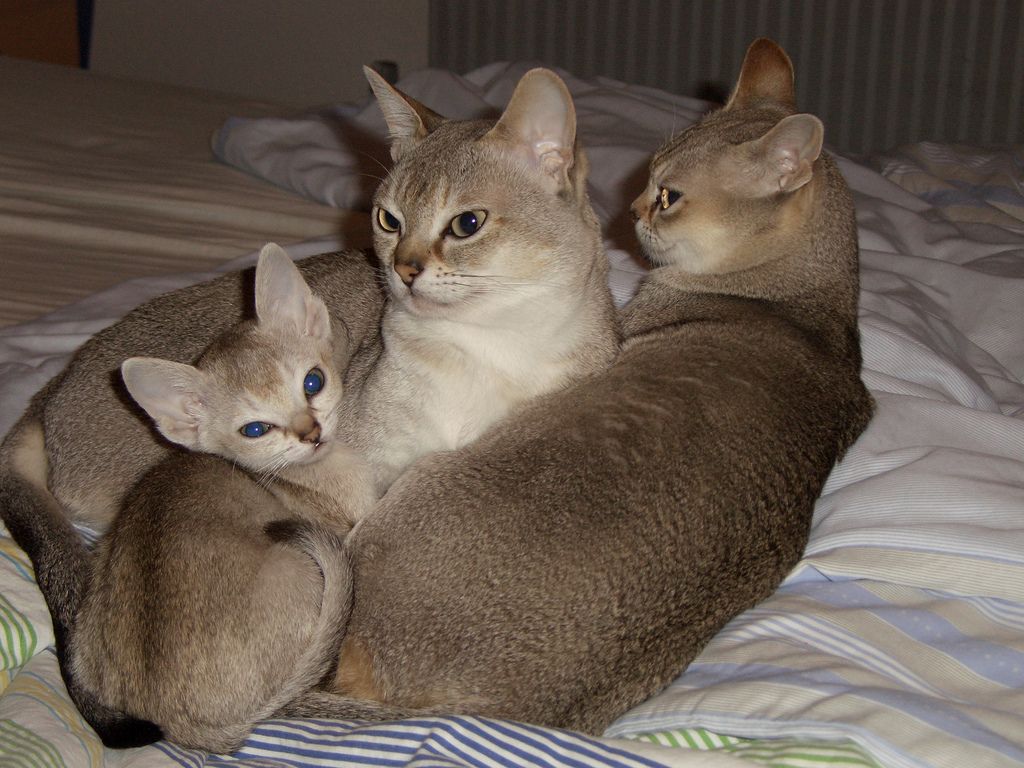
As tiny as the Singapura is, he is the cat in charge, and he proves it by supervising everything everyone does around him. When there is something he does not approve of or does not want, he will trick you into giving him space. The Singapura is brilliant, affectionate, and curious. He loves attention so much that sometimes he gets the reputation of being the family pest.
The cat is extremely friendly to the family members but very wary of strangers though some of them will befriend everyone they meet. The Singapura also gets along with other pets, including dogs, and other cats. Even though they like kids, the Singapura does not like loud noises. Therefore, it will not get along with screaming and noisy children, and it may try to get away from them.
The Singapura is extremely playful, and anything and everything becomes a plaything. He is also very observant of the goings-on around him, and he hates boredom.
Grooming
The Singapura has one of the most effortless coats to groom. A comb once a week removes all the dead hairs and saves you the agony of cleaning off loose hairs from the furniture, clothes, or floor. Brushing or combing weekly also distributes the skin oils to keep the coat shiny.
The cat cleans itself well, which minimizes the number of baths the cat needs. Weekly nail trimming and ear cleaning are what the cat needs most in the grooming sector.
Read next: Balinese Cat Breed
Health
The Singapura is a healthy breed, but like many animals and even humans, they develop genetic health problems. One of the most significant issues with the Singapuras is problems during birth-uterine inertia, which is problematic because of their weak muscles. They deliver mostly through C-section. Another health issue is pyruvate kinase deficiency, which causes anemia. The Singapura has a life expectancy of 11 to 15 years.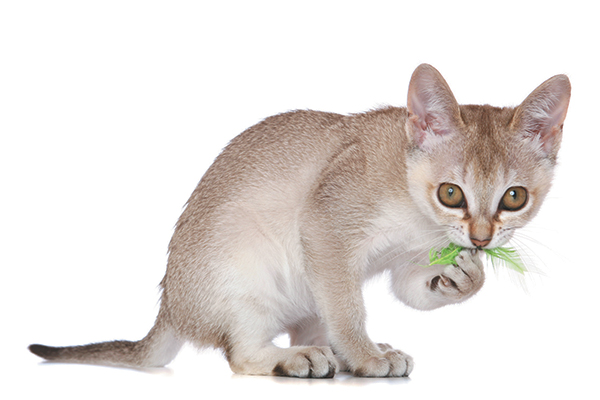
Wrapping it up
If you are thinking of adopting or buying a Singapura, ensure that, you get it from a reputable cat owner or pet shop or cat association that will provide you with all the necessary health certificates. That said, you will enjoy having a Singapura in your home. It lights up the home with its gentleness, affection, playful nature, and intelligence. Do not let the diminutive size fool you. The cat is a masterpiece.
The post The Singapura Cat Breed Information, Pictures, Characteristics appeared first on Pets Tutorial.
by Jane Brody via Pets Tutorial
